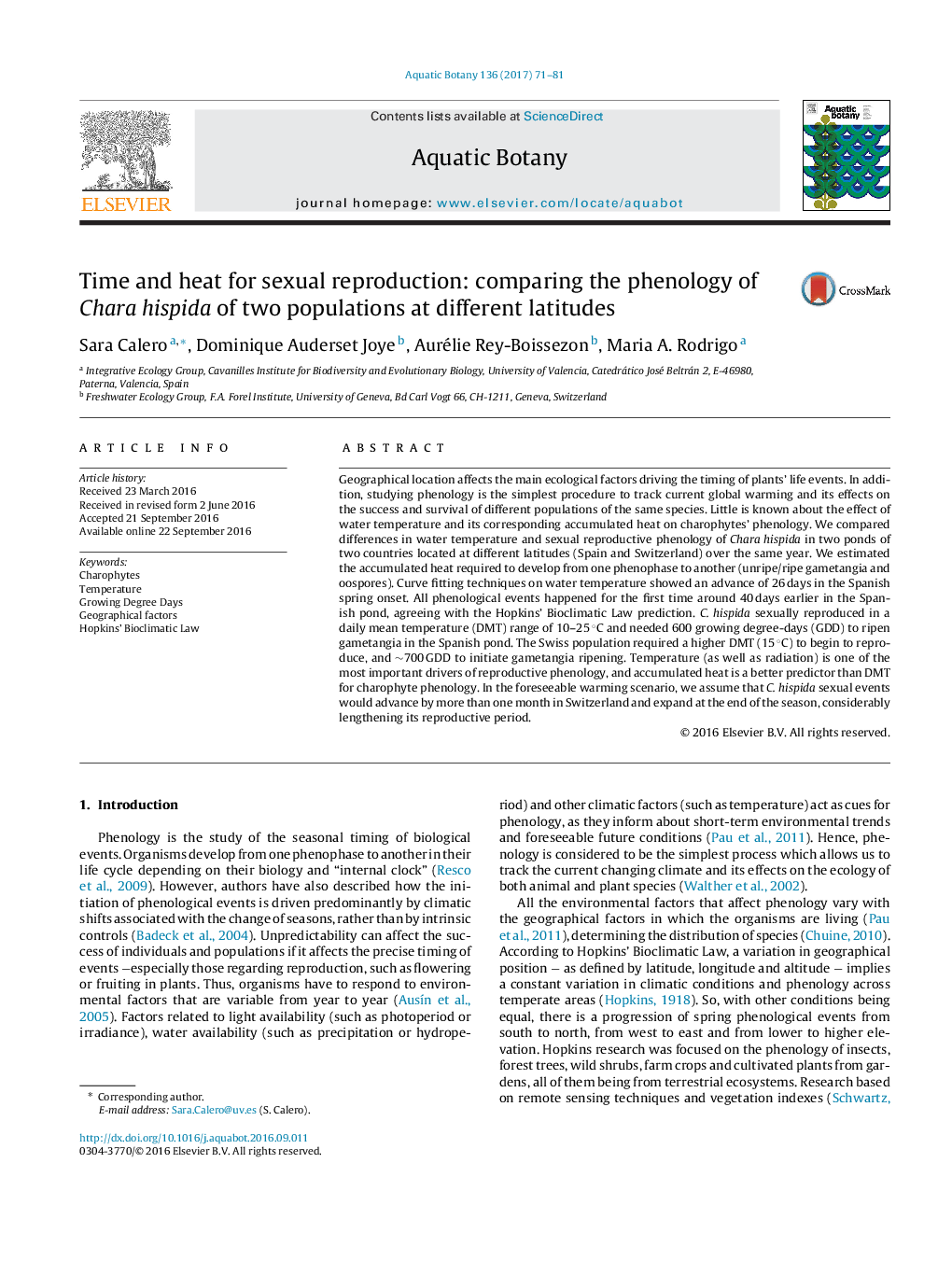| Article ID | Journal | Published Year | Pages | File Type |
|---|---|---|---|---|
| 4527524 | Aquatic Botany | 2017 | 11 Pages |
•Comparison of Chara hispida sexual reproductive phenology in Spanish and Swiss ponds.•All phenological events happened 40 days earlier in the Spanish pond.•C. hispida phenology agrees with the Hopkins’ Bioclimatic Law prediction.•Accumulated heat, a better predictor than daily mean temperature for Chara phenology.•In the foreseeable warming scenario, Swiss C. hispida would lengthen its reproductive period.
Geographical location affects the main ecological factors driving the timing of plants’ life events. In addition, studying phenology is the simplest procedure to track current global warming and its effects on the success and survival of different populations of the same species. Little is known about the effect of water temperature and its corresponding accumulated heat on charophytes’ phenology. We compared differences in water temperature and sexual reproductive phenology of Chara hispida in two ponds of two countries located at different latitudes (Spain and Switzerland) over the same year. We estimated the accumulated heat required to develop from one phenophase to another (unripe/ripe gametangia and oospores). Curve fitting techniques on water temperature showed an advance of 26 days in the Spanish spring onset. All phenological events happened for the first time around 40 days earlier in the Spanish pond, agreeing with the Hopkins’ Bioclimatic Law prediction. C. hispida sexually reproduced in a daily mean temperature (DMT) range of 10–25 °C and needed 600 growing degree-days (GDD) to ripen gametangia in the Spanish pond. The Swiss population required a higher DMT (15 °C) to begin to reproduce, and ∼700 GDD to initiate gametangia ripening. Temperature (as well as radiation) is one of the most important drivers of reproductive phenology, and accumulated heat is a better predictor than DMT for charophyte phenology. In the foreseeable warming scenario, we assume that C. hispida sexual events would advance by more than one month in Switzerland and expand at the end of the season, considerably lengthening its reproductive period.
